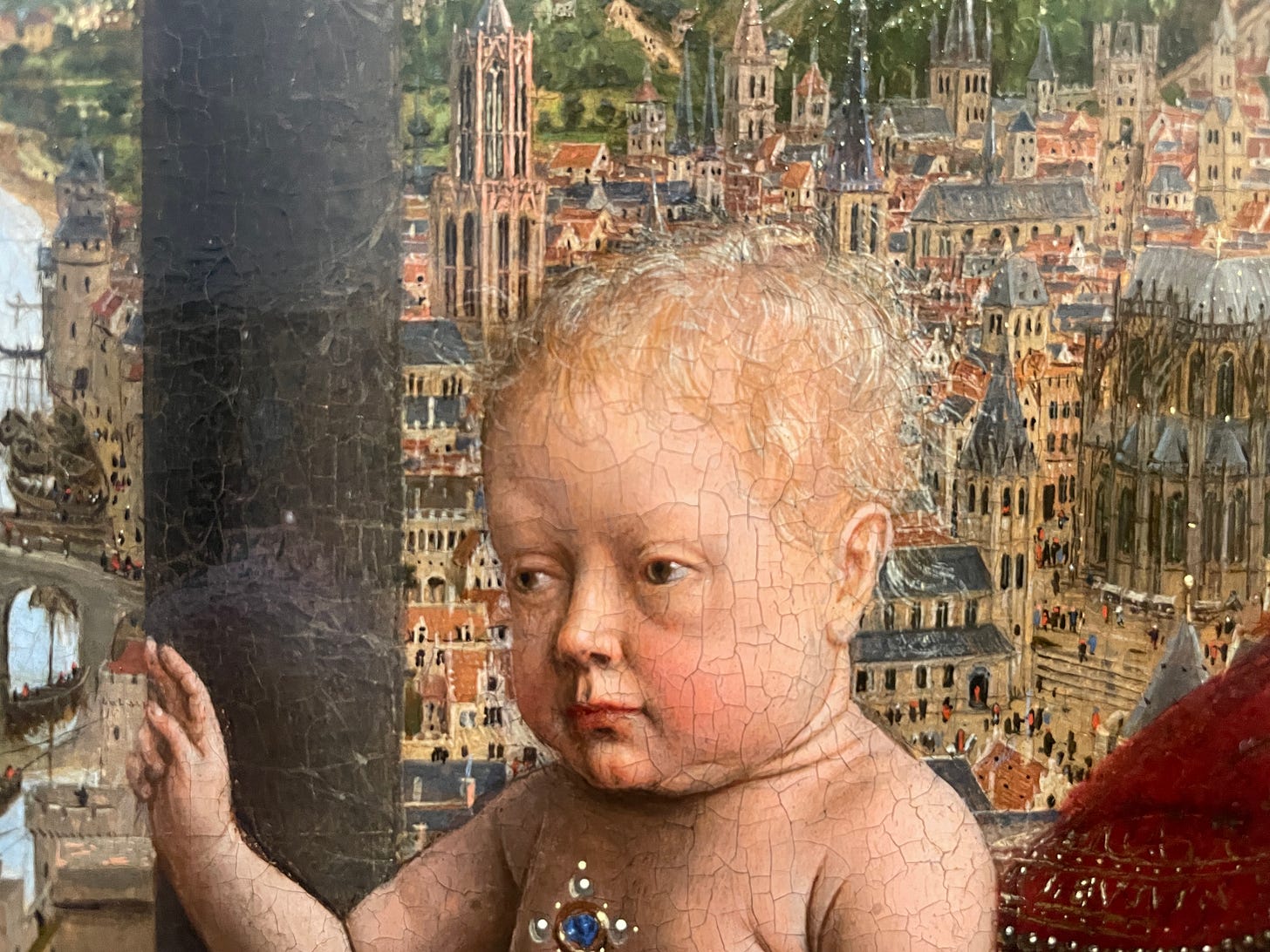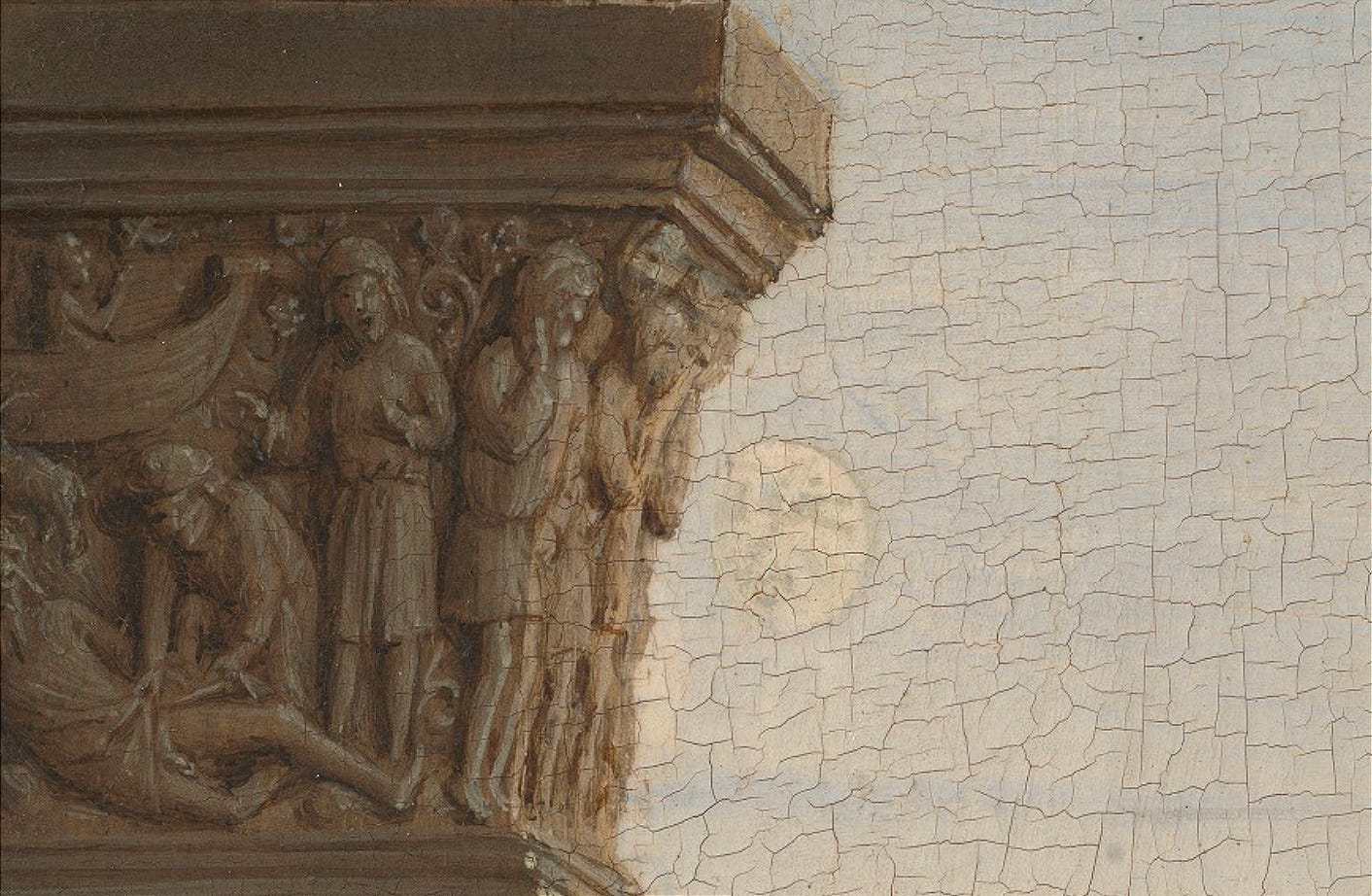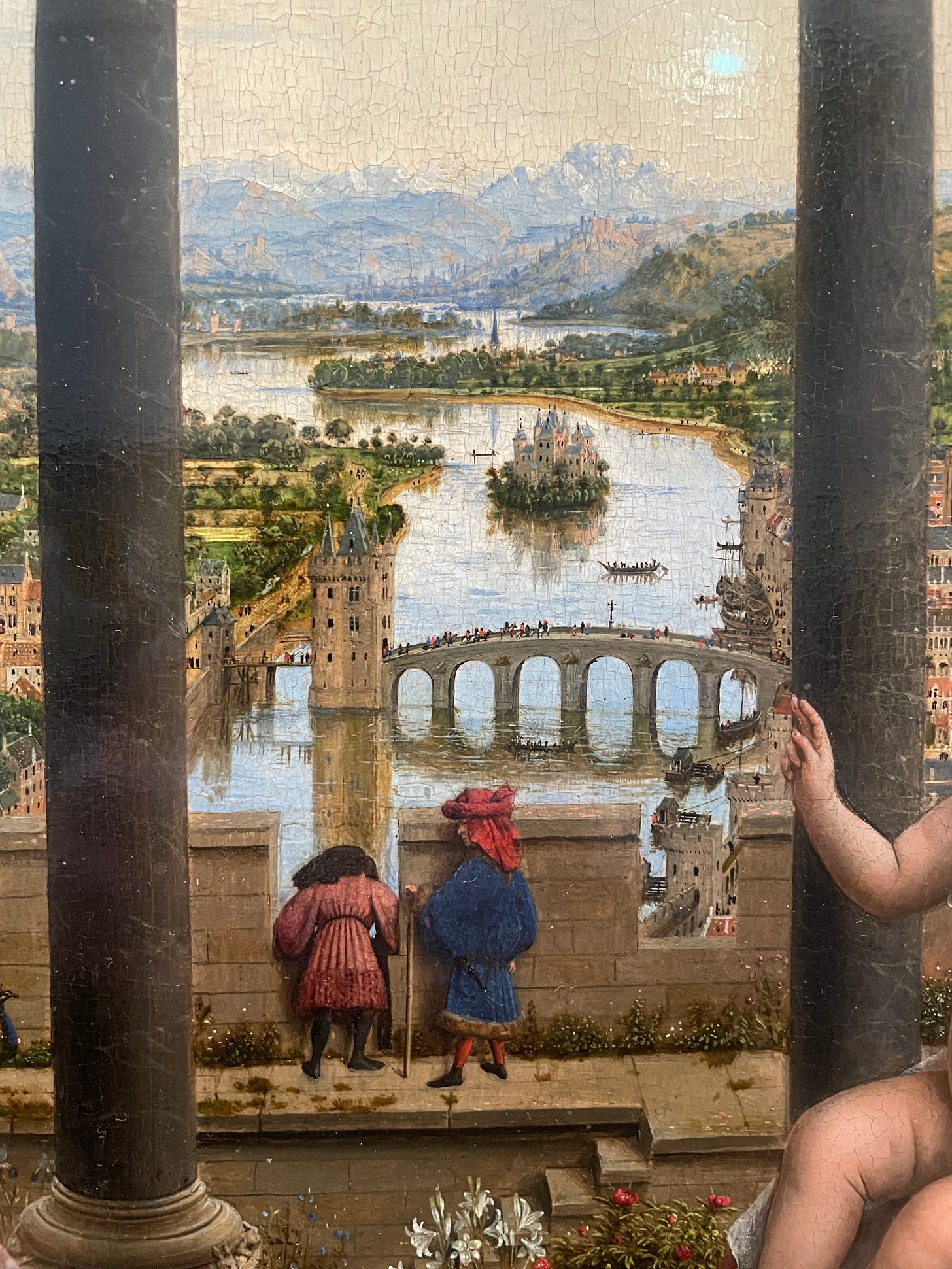JAN VAN EYCK’S PAINTINGS of the early 1400s are filled with revelations of the natural world, but none more remarkable than his images of the moon.
The daytime moon appears in his paintings as it does in life — a limpid, luminous smudge of white hanging in an ocean of ozone, the shadowed part disappearing into pure blue sky.
The effect of light and tone is like that of distant snowcapped mountains (Van Eyck was also the first to paint these).
This miraculous landscape is from the ‘Rolin Madonna’, kept in the Louvre and recently restored, revealing with crystalline clarity Van Eyck’s revolutionary nano-painting technique.

It was commissioned by Nicolas Rolin (on the left), the chancellor and right-hand man of the all-powerful Duke of Burgundy, Philip the Good.
He would have appreciated van Eyck showing him dressed as a prince, having an audience with the Virgin Mary, being crowned queen of heaven as Christ offers his personal blessing to Rolin.
I wonder how much he appreciated the rest of the panel, in particular van Eyck’s miraculous-seeming ability to capture the effects of natural light, and the astonishing townscape in the background, leaps of scale comparing church windows to the pupils of Christ’s eyes.
One of the four moons that appear in Van Eyck’s painting hangs in the sky above Rolin’s tonsured head, almost hidden behind a column capital carved with a scene of the drunkenness of Noah.
It is less distinct than the moon in the Ghent Altarpiece (above), but still shows the distinctive crescent-shaped pattern of light and dark created by the lunar marea, or seas (in fact vast basaltic plains of solidified lava).
The slight blurriness of the moon is proof of sorts that it was painted from life, on the basis of direct observation, and without the use of any optical aids. The telescope was not to be invented for over a hundred years.
Van Eyck’s most impressive moon appears in the small diptych showing the Crucifixion and Last Judgement, now kept in the Metropolitan Museum in New York.
It was completed by his workshop after his death in 1441, but not before he painted one of the greatest sky-scapes in the history of art.

On the right is a gibbous moon, three-quarters illuminated, hanging just a few centimetres from one of the blindfolded thieves crucified either side of Christ.
The composition echoes the placement of the moon in the Rolin Madonna, alongside the drunkness of Noah – what is van Eyck saying?
The sun and moon are often shown in paintings of the Crucifixion. Some seventy years later Raphael painted a Crucifixion scene, now known as the Mond Crucifixion, (the title comes from a former owner of the painting, a Dr Ludwig Mond). The symbolism is of the lunar eclipse that is described in the Bible as happening on the day of the Crucifixion.
Van Eyck’s New York Crucifixion moon goes far beyond such symbolism, hanging above snow-capped mountains (rather an anomaly either in first century Palestine or fifteenth-century Flanders) in a sky that is a catalogue of cloud formations. Matthias Depoorter has noted the depiction of cirrus uncinus ‘with its characteristic curls of precipitating ice crystals blown away by the wind’.1
VAN EYCK PAINTED with the eyes of a scientist, cataloguing the visible world. He is often described as the leading figure of the northern Renaissance — and yet the word seems hardly sufficient to describe his achievement.
It — the word ‘Renaissance’ — was invented in the nineteenth century to explain the great revolutions in art and human life during the years around the 1400s as a result of the rediscovery of the ancient world, of the literature and science, as well as the architecture of the Greeks and Romans.
Jan van Eyck was not rediscovering, but creating something anew — a vision of the world that simply hadn’t existed before. Even if hardly any of the paintings made by Greek and Roman artists have survived, we can be sure they didn’t look like this.
It was a vision made possible by the new technique of oil painting, which he was once credited with inventing — not quite true, but near enough; and also by his presumed skill as a draughtsman, although not a single sheet of his drawings has survived.
In truth, nobody quite knows why it happened — why in the 1420s and 30s in Flanders, as well, in a quite different way, in Florence and central Italy — a handful of artists broke free of the past and opened their eyes and minds to the visible world.
What is sure is that Jan van Eyck was the great pathfinder for this Awakening, making paintings that were quite beyond the capabilities of any artist working in Italy during those years.
His moonshots herald an entirely new period of human life.
They are the first great images of the modern world.
This text was adapted from ‘Awakenings’ the sixth lecture in the series Everything Worth Saving, running currently at Snape Maltings, Suffolk.
For more details please follow this link.
Matthias Depoorter, ‘Jan van Eyck’s Discovery of Nature’, in: Maximiliaan Martens et.al., Van Eyck, exhibition catalogue, (Museum voor Schonen Kunst), Ghent, 2020, pp. 204-235.











